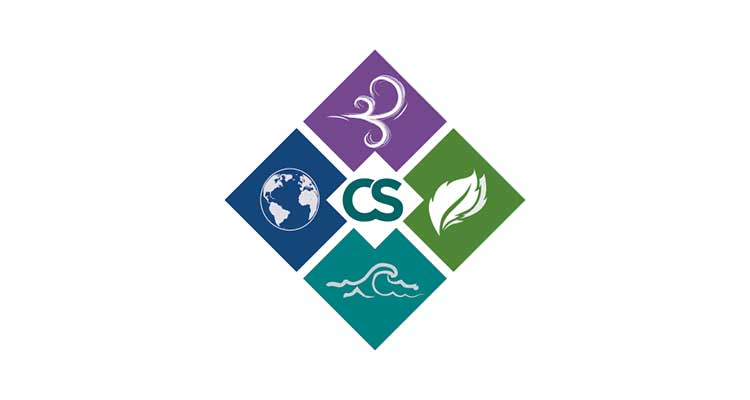The world’s most innovative automotive, aviation, research, pharmaceutical and manufacturing companies, as well as many of the world’s top universities, are moving to software-as-a-service (SaaS) for chemical and waste management, GHS compliance and lab safety.
Enterprise Class Software at a Fraction of the Cost
By Tony Diamantidis, Senior Director, Chemical Safety Software
Two years after offering our software-as-a-service (SaaS) Chemical Safety software the data is in at is indisputable: Many of the world’s most innovative companies are transitioning from legacy enterprise systems to pay-as-you-go solutions for chemical inventory management, waste disposal, environmental regulatory compliance, workplace safety and lab safety. Online EHS applications offered on “The Cloud” for businesses of all kinds have gained momentum and are increasingly the preferred option for both large and small organizations. Available online 24/7 and accompanied by easy-to-use EHS mobile applications for chemical inventory tracking, hazardous Waste management, GHS & SDS, and safety inspection. These EHS mobile apps can be used anywhere, anytime, and they provide measureable improvements in accuracy, efficiency and cost-savings.
How do you save $99,000+ from your EHS software budget? The average mid-level implementation of enterprise software costs approximately $100K, after licensing, implementation, hardware and internal IT and vendor maintenance contracts are factored in. Our SaaS EHS solutions can cost as little as $79 per month per administrative user, with unlimited non-paying users having access to view data with their smart phone or online.
More than three quarters of companies now utilize cloud-based applications and nearly all report improved operations. Within 3 years, 91% of companies will have adapted to cloud computing solutions. It is no coincidence that Salesforce.com, the world’s leading CRM SaaS technology, is about to complete construction on its new Salesforce Headquarters which will be the tallest building in San Francisco, surpassing the famed Transamerica Pyramid that has claimed this position for almost two generations. Innovation surpassed the establishment.
What is cloud computing? According to Wikipedia, cloud computing is the delivery of computing as a service rather than a product whereby shared resources, software, and information are provided to computers and other devices as a utility over the Internet. As one of the pioneers in the Environmental Management Information Systems, I have lived through more than a quarter century of EH&S software implementations for companies of all sizes. I have teamed with some of the world’s largest companies and have navigated through some murky waters.
Environmental departments have been particularly challenged by:
- Limited or non-existing budgets
- Inflexible internal IT resources
- Lack of corporate buy-in
- Rapid and constant domestic and international environmental rules and regulations
- Minimum internal buy-in from different stakeholders
Cloud SaaS computing provides meaningful alternatives to overcome all these challenges and more. For EHS, adapting to the cloud will simplify the complex, yet enhance efficiency, accuracy, and safety.
Here are some key points:
- Flexibility and Scalability: In the old days, companies resorted to pilot implementations and trial-and-error approaches to EH&S software. With Cloud computing, companies can scale up or down rapidly, cost-effectively and with very little risk.
- Speed of Implementation: I have participated in implementations that lasted months, sometimes much longer. A 30, 60 or 90 day EH&S software implementation was a dream-come-true for most every organization. With cloud computing, implementation time can be virtually instantaneous. Stakeholders can start using the software as soon as they sign-up, a breakthrough in an industry not known for its speed.
- Capital Expense Avoidance: I’ve spent probably more than half my professional life teaming with EH&S executives to make and present the financial case for EH&S software. With Cloud computing, signing up on a monthly plan is a single-click action that falls far below the radar of corporate spending limits.
- I.T. Independence: We’re free at last! I.T. departments have been in charge of business decisions far too long. EH&S doesn’t even have to inform I.T. of EH&S cloud computing applications. Internet bandwidth is faster and enormously cheaper. There are no costs for hardware, or networks, or software or the frustrating wait for in-house I.T. support. An Internet connection does it all!
- Technology updates: The responsibility of keeping up with technology advances and regulatory changes now lies squarely on the shoulders of the software vendor, who, incidentally, is delighted to be in total control of the speed and efficiency with which updates can be applied.
- Security: Cloud companies are committed to investing in data security. Cloud applications operate in secure data centers with layers of information protection and security tools that smaller companies can now benefit from through economies of scale.
- Disaster Recovery: Since all business logic and data is stored in the cloud, cloud companies are diligent in managing, backing up and mirroring their installations, offering unprecedented uptime and rapid data recovery and disaster avoidance.
- Information Sharing and Collaboration: In the cloud, non-confidential data can be accessed in a central location with round the clock availability by everyone. New information like the newly enacted GHS labelling and Safety Data Sheet mandate can now be updated by many and available to access and use by many more, anywhere, at anytime!
- Competitiveness: Cloud technologies offer equal value to entities small and large, for a reasonable cost. Small businesses access enterprise-class technology and up-to-date regulatory information at the same price per user as large conglomerates.
- Mobility: With no physical tie to the system, employees are empowered to work from anywhere and everywhere on a variety of devices. iPhones and iPads, Android smart phones and tablets all have built-in tools like the camera, for example, that can be used to read barcodes and update chemical information instantly and accurately. Cloud-based SaaS software can create virtual offices at home, on holiday and even on the daily commute. In today’s rapid development world, cloud applications can be accessed on mobile devices virtually everywhere. Goodbye rush-hour. Hello happy hour!
- Environmentally Friendly: Yes! It’s true! cloud-based EHS Software are not only good for the environment, but they also help the environment by reducing the carbon footprint of their own operations through lowered energy costs and carbon emissions that shared computing environments offer over in-house computer hardware.
- Application Support: I saved the best for last! EH&S application users need expedient and effective help which traditionally they have never gotten either from the software vendor or from their own IT staff. Network or database issues, software bugs, missing or corrupt data, reports that don’t print correctly or don’t print at all and regulatory changes that are not yet applied to the environmental compliance software are only some of the issues that need to be addressed. Cloud-based EH&S installations address these issues better than ever before. The Cloud vendor is the only responsible entity that must provide user support and they are able to do so rapidly and efficiently since they have control of the installation and every aspect of it.
Cloud Computing = Self-Service IT !!!
That’s right! You get what you need to get done DONE, and you let your hard-working IT department do the work they need to do to keep your entity’s computers running smoothly.
The bottom line? Massive Savings; huge impact: What all this adds up to is a value proposition that offers far greater return faster, better and cheaper!
About the Author: Tony Diamantidis has carried the torch for environmental excellence literally and otherwise for more than 30 years. He is the principal architect of his company’s Environmental Management Systems (EMS Software) technology, a Cloud-based environmental health and safety software infrastructure (www.chemicalsafety.com). He has served as senior environmental consultant to multinational corporations, government organizations, and Olympic venues including the Athens 2004 Olympics where he carried the first ever Olympic Torch for the Environment on the eve of the Games opening day. He can be reached at tonyd@chemicalsafety.com or on LinkedIn.

